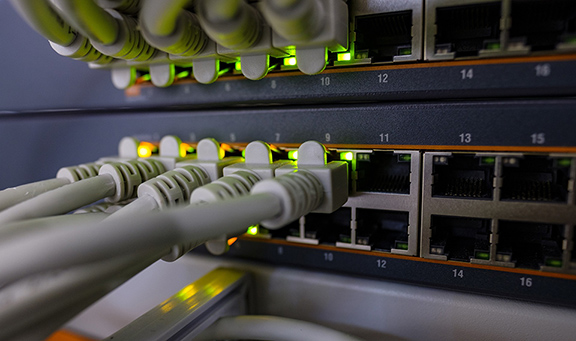The shift from SDI to IP network has been a discussion in the broadcasting industry for a long time. Yet it wasn’t until recently that the technologies enabled a swift transition between the two. Currently, many major broadcasting companies worldwide are nearing the transition to using IP-based systems. No wonder, it has left several broadcasters thinking that SDI is dead which is simply a myth. In reality, both technologies have their place in the Industry. However, one cannot disagree that IP technology is the real future.

Why has IP started overshadowing SDI?
One of the most significant responsibilities of live broadcasters is transferring the files at low latency while maintaining the video quality because lost information cannot be resent. It encases the importance of utilizing powerful technologies that offer high video quality, ultra-low latency, and reliability.
IP technology offers us these services and keeps our workflow smooth. Apart from delivering the benefits of inherent flexibility and scalability, the cutting-edge technology saves employers time, reduces the overall cost, and ultimately boosts the company’s productivity. This is not it though, the technology offers several benefits such as:
Cost-effectiveness:
IP broadcasting is the process of using internet protocol to transmit audio and video signals for television and radio, as opposed to traditional methods such as SDI technology. It offers more flexibility, efficiency, and interactivity in content distribution, and enables the delivery of broadcast content through the internet for live streaming and on-demand access.
Higher quality streaming for live production with lower latency
SDI broadcast requires several cables and SDI ports on routers and switchers. However, IP technology requires comparatively fewer cables. Moreover, the technology provides ultra-low latency that leads to smooth transmission of full HD, 4k and 8k digital content.
Flexible & Scalable Operational workflow
Broadcasting Video Over IP provides exceptional flexibility and speed to configure the IP infrastructure. Brands can integrate and manage different types of operations at a time. For example, file-based operation and stream-based operation. In addition, it also helps companies create A/V systems that are alterable from any point within the architecture.
Interoperability:
While gaining a detailed insight into IP-related equipment and the technology itself, you can begin the transition by shifting to the hybrid SDI. This way, your brand can still work with the existing equipment while experiencing the impact of the latest technology. Later, when the time seems right, you can gear towards the technology that benefits you the most.
Hybrid SDI
While gaining a detailed insight into IP-related equipment and the technology itself, you can begin the transition by shifting to the hybrid SDI. This way, your brand can still work with the existing equipment while experiencing the impact of the latest technology. Later, when the time seems right, you can gear towards the technology that benefits you the most.

Is IP always better than SDI Broadcasting?
The ultimate decision should revolve around the company’s values, vision, and aims. As both IP and SDI broadcasting comes with their own sets of pros and cons which have to be complemented according to the requirements of the company.
While IP Broadcasting may offer cost-effective and operational edge solutions to large-scale companies, it cannot be confirmed for small-scale businesses. Moreover, SDI broadcasting is relatively more secure from hackers and cybercriminals. It is because broadcasters need to follow detailed instructions for plugging the device into the network, recognize, authorize and make it available.
Companies that are hesitant to take risks by completely migrating to IP can choose the hybrid SDI model. Here, people can work with the existing pieces of equipment while experiencing the effects of the latest digital transformation.
Choosing the right option is crucial yet daunting. The good news is that you can always consult RGB Broadcasting, leading technology solutions provider that is ever-ready to guide you through the entire procedure. Our experienced team members have helped several clients maximize their niche outreach and improve their ROI. So, what are you waiting for?
Talk to us today!
FAQs
SDI (Serial Digital Interface) is a technology that uses specialized and expensive equipment to transmit video, audio, and other data over a dedicated point-to-point connection. IP (Internet Protocol) is a technology that uses standard networking equipment, such as routers and switches, to transmit video, audio, and other data over a network using IP packets.
Whether IP or SDI is better for a particular broadcasting infrastructure depends on the specific needs and requirements of the organization. It's crucial to consider the specific needs and requirements of the organization before making a decision.
Despite the many advantages offered over SDI-based infrastructure, IP is not always the best option for every organization. It's crucial to consider the specific needs and requirements of the organization before making a decision.



